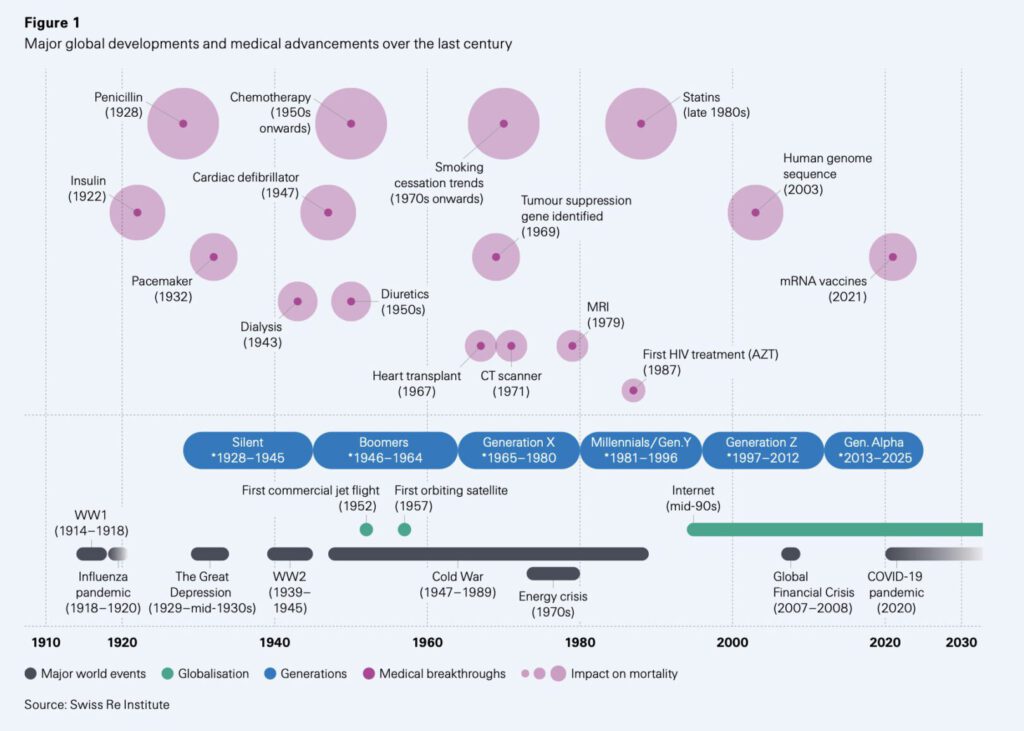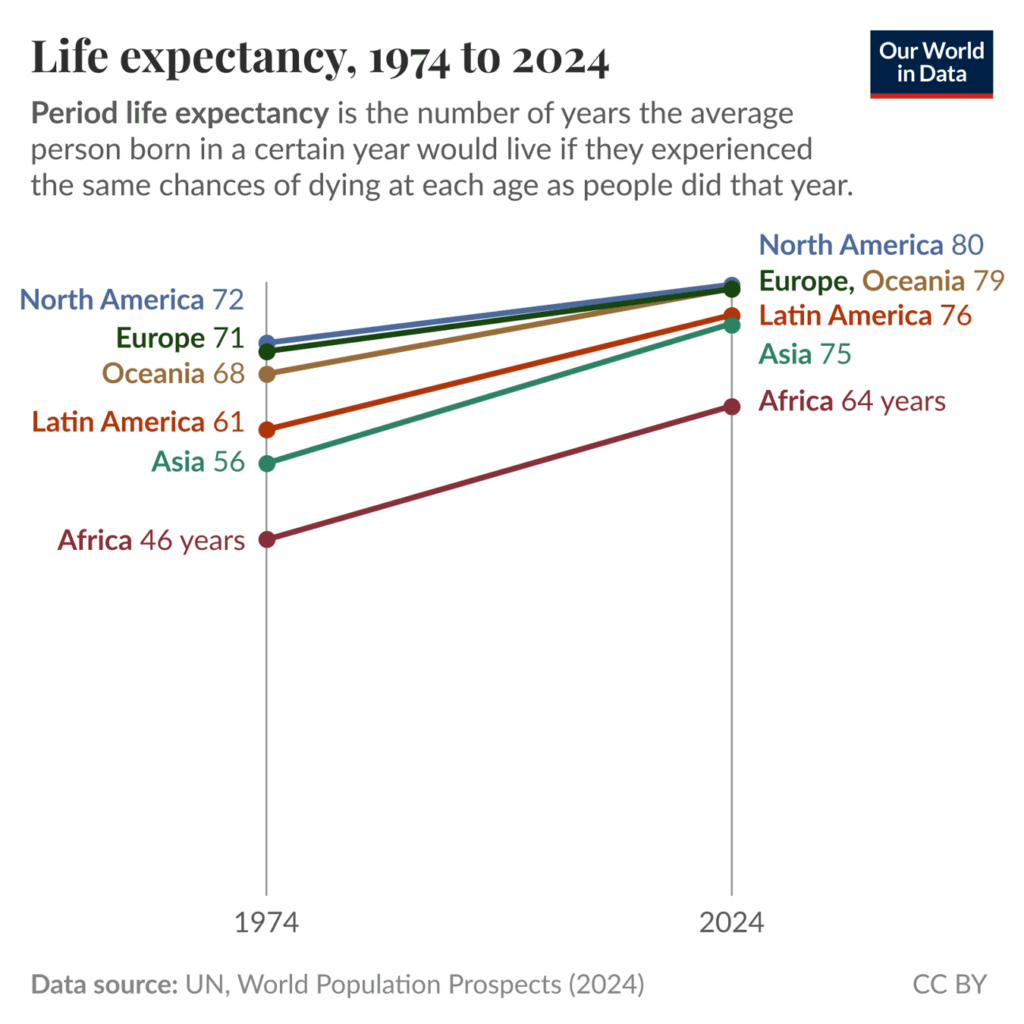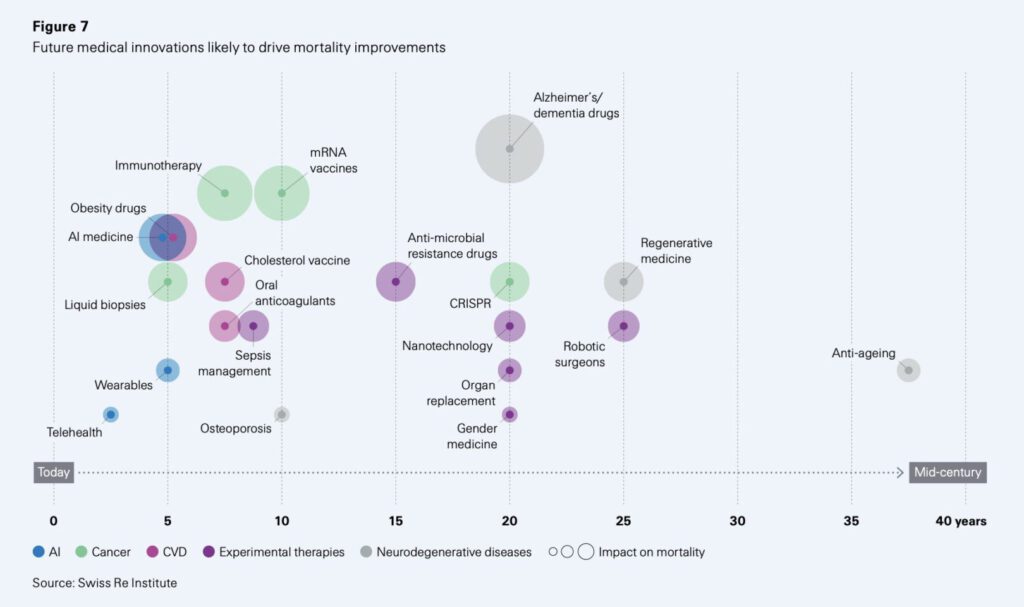
Increases in life expectancy usually occur in waves, and a new surge is now on the horizon. Two keys to ‘success’ are emerging.
In the 20th century, new drugs to lower blood pressure and cholesterol levels led to a sharp increase in global life expectancy.
It rose from 55 years at the end of the 1950s to well over 70 years by 2020.
Lifestyle and healthcare
Japan and Switzerland achieved some of the highest life expectancies at birth, at around 84 years, compared to around 70 years back in 1960.
In both countries, the increase is due to improvements in cardiovascular health, according to life experts at reinsurer Swiss Re in a recent updated study on the subject.

Japan and Switzerland stood out for their excellent access to healthcare and below-average obesity rates, it added.
Lifestyle factors and access to a well-funded healthcare system have therefore proven to be the key to success.
Simple measures help
According to the reinsurers, it is remarkable how Japan was able to reduce the number of stroke-related deaths by over 80 percent between 1980 and 2012.
This was achieved thanks to relatively simple measures, such as recommending a lower-salt diet, according to Swiss Re on longer life expectancy.

Improvements in life expectancy usually occur in waves, as the graph above shows.
Trend around smoking has an effect
This follows major medical breakthroughs or in the wake of widespread social trends such as the decline in smoking.
In Switzerland, a relatively large number of people still smoke, which shows that there is still potential for increasing life expectancy even in industrialized countries.

The next wave of increased life expectancy is expected to occur over the next 20 years.
According to Swiss Re, medical research is clearly the driving force behind this.
Focus on older people
Further medical breakthroughs are to be expected, particularly with regard to cancer and age-related diseases such as Alzheimer’s, which should lead to even longer lives for humanity.
The key to this will be combating diseases that affect older people, especially Alzheimer’s and other forms of dementia.
Personalized instead standard medicine
The greatest potential for increasing life expectancy lies in the early detection and treatment of cancer.
Liquid biopsies, for example, enable a much earlier detection of certain types of cancer, and the replacement of standard therapies with personalized precision-targeted drugs is also likely to increase survival rates.
New technologies could have a far-reaching impact on life expectancy, such as artificial intelligence (AI) in medical research and as an aid in treatment decisions.
In addition, there are wearables and apps for collecting data on health and well-being.
Reducing obesity as a factor
The US, as an industrialized country, shows that not everything has to be so straightforward.
Here, life expectancy is still divided as a result of growing socioeconomic inequality, meaning that rich people live longer than poor people.
An estimated 70 percent of the US population is affected by obesity, which is causing diseases such as type-2 diabetes to be on the rise.
In addition, opioid-related deaths are affecting life expectancy, with the number of such deaths having increased eightfold since 1999.

However, this also makes it clear that weight loss drugs such as Ozempic, Wegovy, and others will have a huge impact on life expectancy in the US.
Mortality is expected to fall by 6.4 percent in the US by 2045, according to calculations by Swiss Re experts in another study.
Discussion about possibilities needed
It is clear that the next wave of even longer lives will have a major impact on national economies.
If people live far longer than before, retirement provisions, for example, will have to last even longer accordingly.
This is why there needs to be a discussion in individual countries about whether people actually want this development, and what is technically and biologically possible.
After all, “success” seems dubious if the quality of life is not right.
The main factors influencing the prolongation of ever-longer lives are access to healthcare and advances in medicine.
This means that humanity essentially now holds the keys to longevity in its own hands.
October 26, 2025/kut/ena





